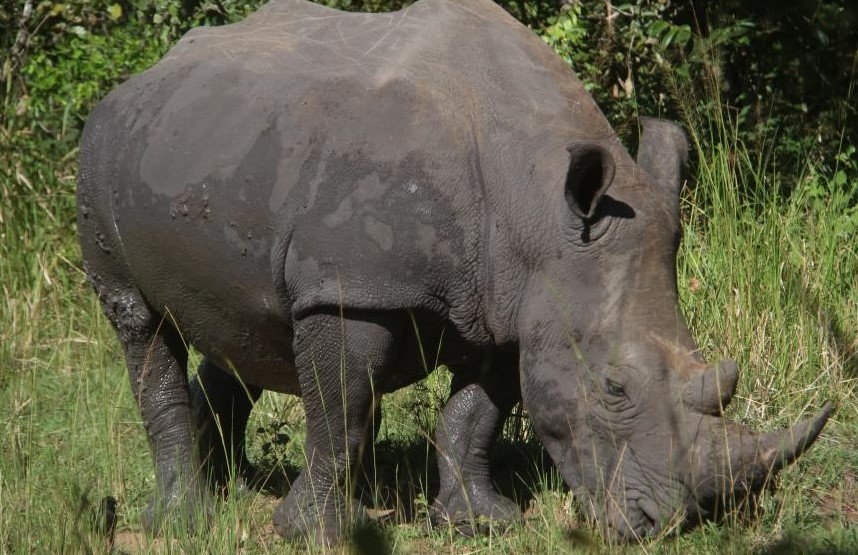The Magnificent Rhinos of Uganda-Uganda, known as the “Pearl of Africa,” is not only blessed with breathtaking landscapes and diverse wildlife but also serves as a sanctuary for some of the world’s most majestic creatures, including the rhinoceros.
Among the two species of rhinos, the white rhino and the critically endangered black rhino, Uganda is home to the latter. Despite facing numerous threats over the years, the country has undertaken remarkable conservation efforts to protect these iconic animals and preserve their natural habitats.
Rhinos in Uganda’s History
Historically, Uganda was abundant in both white and black rhino populations. However, due to rampant poaching and habitat loss, the rhino population declined significantly in the 20th century. By the early 1980s, the black rhino was on the brink of extinction, with only a handful of individuals remaining in the country.
The Role of Community Engagement
Conservation efforts in Uganda have recognized the importance of involving local communities in rhino conservation. By providing education, alternative livelihood opportunities, and engaging communities in anti-poaching efforts, a sense of ownership and responsibility has been fostered among the local population. This has contributed to a decline in poaching incidents and increased support for conservation initiatives.
Ecological Significance and Conservation Challenges
Rhinos play a vital role in maintaining the ecological balance of their habitats. As large herbivores, they shape the landscape by creating pathways and clearing dense vegetation, which benefits other plant and animal species. Additionally, their feeding habits help disperse seeds and promote biodiversity.
Despite the progress made, conservation efforts face several challenges. Illegal wildlife trade remains a persistent threat, driven by the high demand for rhino horns in traditional medicine markets. Furthermore, habitat degradation and human-wildlife conflict pose significant challenges to rhino populations.
Uganda has emerged as a key player in the fight to save these endangered creatures. This article explores the current status of rhinos in Uganda, the conservation measures in place, and the remarkable progress made to protect these iconic animals.
Conservation Efforts and Successes
Uganda’s concerted efforts to protect rhinos have yielded significant results. The country implemented a rigorous anti-poaching campaign, supported by armed rangers who patrol protected areas to deter poachers. Additionally, collaboration with international organizations, such as the Rhino Fund Uganda and the Uganda Wildlife Authority (UWA), has played a crucial role in the conservation success story.
To ensure the rhinos’ safety, Uganda has established dedicated sanctuaries and national parks. The Ziwa Rhino Sanctuary, located near Nakasongola, has been instrumental in rhino conservation. The sanctuary provides a safe haven for both black and white rhino species, offering them protection from poachers and opportunities for breeding and reintroduction into the wild.
Thanks to these conservation efforts, Uganda has witnessed a remarkable increase in rhino numbers. From a mere handful of rhinos in the 1980s, the population has steadily grown. As of the latest census, there are over 30 rhinos in Uganda, a testament to the country’s commitment to their preservation.
Ecological Impact and Tourism
The reintroduction of rhinos in Uganda has not only benefited the species but also had a positive impact on the ecosystem. Rhinos play a crucial role in maintaining the balance of their habitats by shaping vegetation and creating grazing areas for other herbivores. Their presence contributes to biodiversity and supports the overall health of the ecosystem.
Furthermore, the success of rhino conservation in Uganda has attracted tourists from around the world. Rhino trekking has become a popular activity, allowing visitors to witness these magnificent creatures up close in their natural habitat. The revenue generated from eco-tourism plays a significant role in sustaining ongoing conservation efforts and local communities.
In Conclusion, The conservation efforts for rhinos in Uganda have been remarkable, and the gradual recovery of the black rhino population is a testament to the dedication of all those involved. By combining anti-poaching measures, habitat restoration, and community engagement, Uganda has become a beacon of hope for rhino conservation.
However, sustained efforts and increased international collaboration are essential to ensuring the long-term survival of these iconic creatures and preserving Uganda’s rich biodiversity for future generations. With continued commitment, Uganda can maintain its status as a sanctuary for the magnificent rhinos that call it home.



Comment (0)